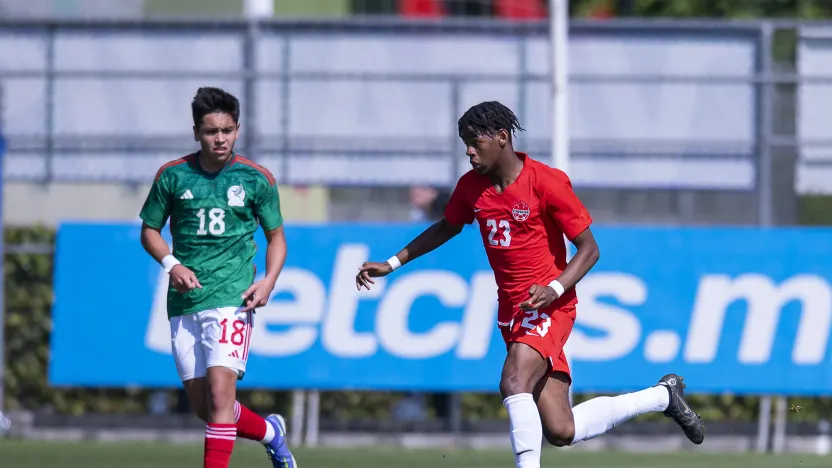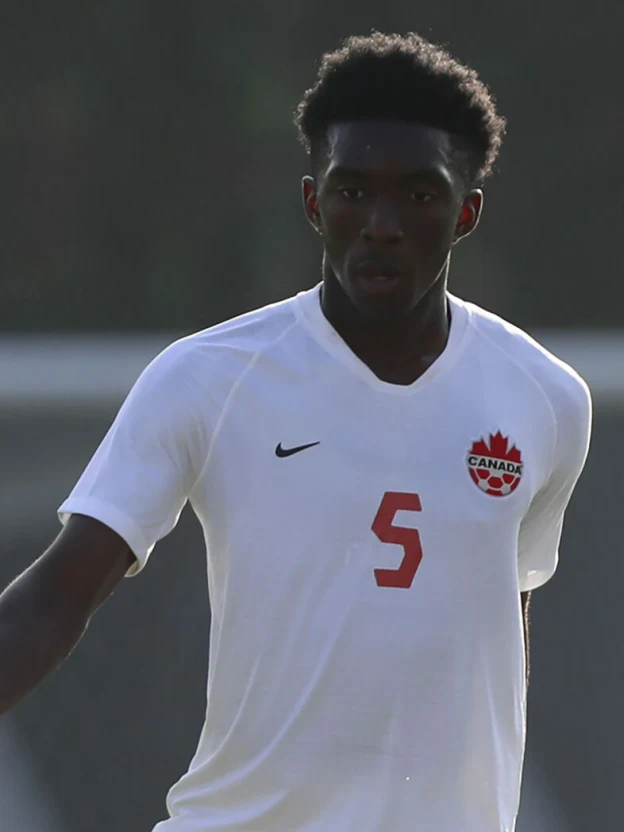There has been no position more discussed and debated in Canadian men’s national team circles over the past few years than centre-back. That conversation quieted down ever so briefly during the final round of Concacaf World Cup qualifying, where Canada allowed just seven goals in 14 matches, the fewest in the region. But after conceding seven goals during the 2022 World Cup group stage, that discussion quickly re-ignited. The past couple of weeks in Guatemala, however, have provided some promising signs as the Canadian U-17 men’s national team qualified for the 2023 U-17 World Cup after a 3-0 win over Puerto Rico on Wednesday night. They did so largely on the back of an excellent team defensive performance — and some exceptional individual defensive displays. Canada has conceded just three goals through five matches in the tournament, the third-fewest of any team so far. Their 0.60 goals against per game so far are the best a Canadian team has managed since 2011, when they finished as runners-up. That team, which included future national team players Sam Piette and goalkeeper Max Crépeau, actually did not concede until extra time of the final — where they collapsed and allowed the United States to score three times. It is worth keeping in mind through all of this that the U-17 level is notoriously hard to scout because at that age physical attributes and development can have an outsized effect on performance in comparison to the professional, or even U-20 game. But both the quality and quantity of standout Canadian defenders at the tournament have been impressive.

Leading the way is a trio of Toronto FC academy players who have made up Canada’s most frequent back three in what has largely been a 3-5-2 formation throughout the tournament. While it took that group a bit of time to mesh with the rest of the team early in the tournament, especially in transitional defending which requires a lot of communication and familiarity, their built-in chemistry has become evident. Arguably Canada’s most exciting player at the tournament has been TFC academy central defender Chimere Omeze, who was named to the tournament’s team of the group stage despite missing the finale, a 1-0 loss to the United States. Omeze is a truly modern central defender, able to move the ball forward either through clever passing or his outstanding dribbling ability. In Canada’s opening match against Trinidad & Tobago, Omeze scored on a thumping header, before a brilliant run forward helped set up Kyler Vojvodic’s game-winner. His recognition of where space is on the field and his ability to run into it either on or off the ball shows an outstanding level of football IQ. But while his abilities on the ball jump off the page, equally impressive and important has been his penchant for recognizing when to use them. Omeze deploys these attacking skills when Canada is already safe and set in possession, demonstrating a strong understanding of the game and defensive risk. He has also proven to be an excellent defender, particularly in one-on-one situations. A rematch with the United States on Friday in the semi-finals will be intriguing to see him matched against some of the tournament’s best attackers. Another key standout has been 14-year-old (he turns 15 on Saturday) Richard Chukwu. While he is more prone to mistakes than his older teammates — a lapse in concentration in the opener against Trinidad for example ruined Canada’s offside trap and led to a goal — his composure is nonetheless well beyond his years. As the youngest player on the Canadian team, so is his ability to win duels and outmuscle opposing attackers. Between Omeze and Chukwu for most of the tournament has been Canadian captain Lazar Stefanovic. Often the last man back, Stefanovic has been critical to organizing the Canadian defence, something which has allowed the more attack-minded defenders to safely join the attack. Stefanovic is a no-nonsense type of defender who makes a lot of the simple and safe passes that are key to retaining possession. That isn’t to say he doesn’t have a flash of brilliance in him as well, however, as he scored on a clever free-kick routine against Puerto Rico in the quarter-finals (off a foul won by a great run forward by Omeze, no less).
Other Canadian players have caught the eye as well. When called upon, highly touted dual-national central defender Victor Fung, out of Inter Miami’s academy, has also filled in capably and is another name to watch. In front of the backline, midfielders Jeevan Badwal and Alessandro Biello have put in tireless work to uphold the defensive stability and shape. Biello, the son of national team assistant Mauro, in particular, has been quick to dispel any unfair ‘coach’s son’ tags with his standout football IQ and silky distribution. Wingback, and CF Montréal prospect, Gaël de Montigny has been one of Canada’s elite players going forward, with a pro-level left-footed delivery. Up front, meanwhile, Vojvodic leads the team with three goals. Given the position of need on the national team, however, it is the centre-backs who have been the most notable. At least one further test now awaits the Canadian team as they take on the United States in a rematch in the tournament semi-finals on Friday. Canada held the U.S. to just a single goal in their first meeting, but they scored a combined 20 in the other four matches at the tournament. If they can pass that test, it would mean only a second-ever appearance in the Concacaf U-17 final. In November, they will get a further chance to match up against some of the world’s best in Peru. This is an opportunity that hasn’t been afforded, or earned, often enough by Canadian youth players and will be key to the further development of this group. Getting players more international experience before they reach the senior team has been a key goal of senior team head coach John Herdman. Given even the oldest players in this group will barely be out of their teens by the time the 2026 World Cup comes around, how soon they reach Herdman and the senior team remains to be seen. But there is plenty of reason to be optimistic about this crop of players. The future is looking bright for the Canadian men’s national team, and for once that is particularly true at the back.
